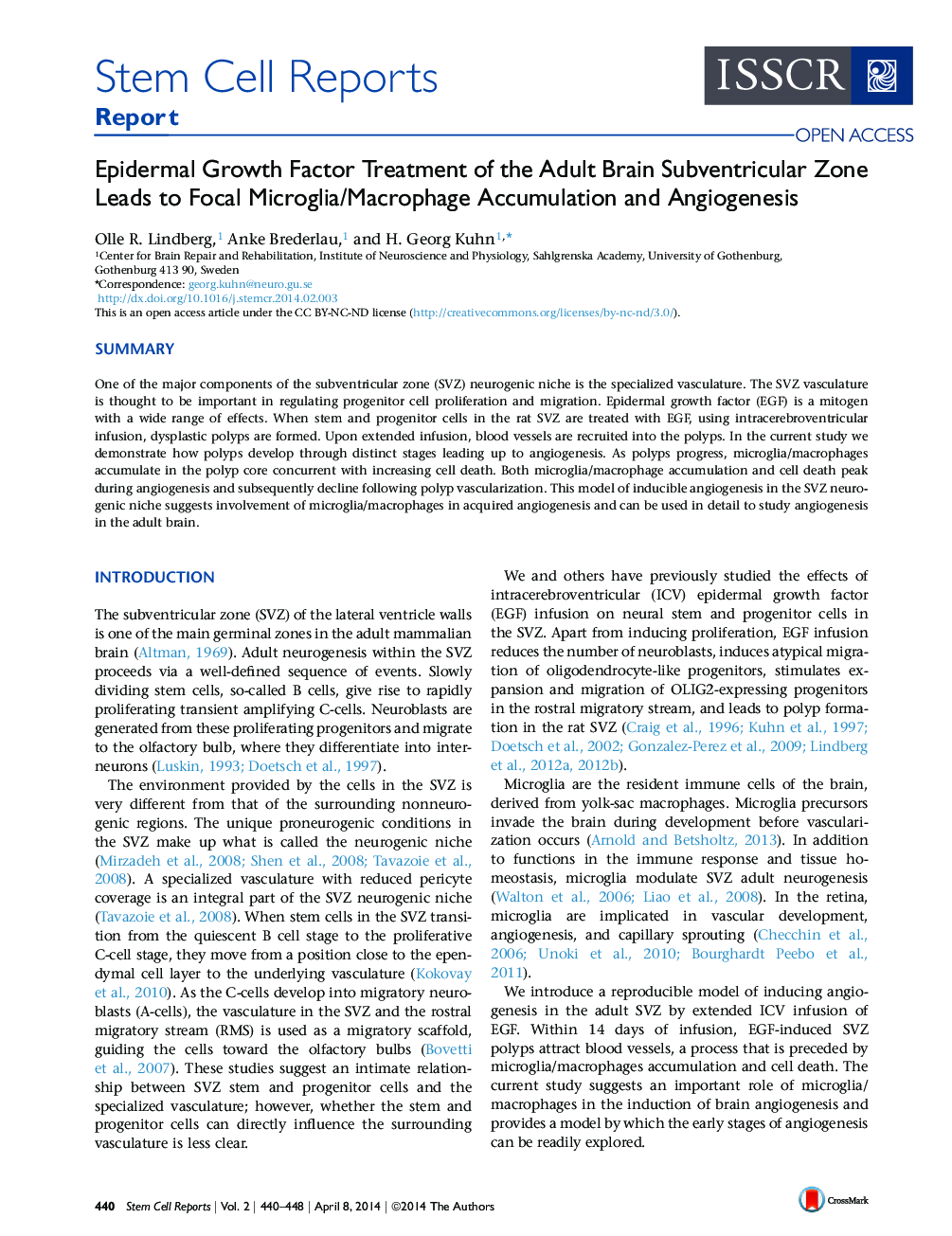| کد مقاله | کد نشریه | سال انتشار | مقاله انگلیسی | نسخه تمام متن |
|---|---|---|---|---|
| 2093813 | 1081979 | 2014 | 9 صفحه PDF | دانلود رایگان |
• EGF-induced growth of polyps leads to vessel recruitment and angiogenesis
• Four distinct stages are discernible in polyp development (I–IV)
• Microglia/macrophages and dying cells progressively accumulate in the polyp core
• Microglia/macrophages and dying cells are reduced after polyp vascularization
SummaryOne of the major components of the subventricular zone (SVZ) neurogenic niche is the specialized vasculature. The SVZ vasculature is thought to be important in regulating progenitor cell proliferation and migration. Epidermal growth factor (EGF) is a mitogen with a wide range of effects. When stem and progenitor cells in the rat SVZ are treated with EGF, using intracerebroventricular infusion, dysplastic polyps are formed. Upon extended infusion, blood vessels are recruited into the polyps. In the current study we demonstrate how polyps develop through distinct stages leading up to angiogenesis. As polyps progress, microglia/macrophages accumulate in the polyp core concurrent with increasing cell death. Both microglia/macrophage accumulation and cell death peak during angiogenesis and subsequently decline following polyp vascularization. This model of inducible angiogenesis in the SVZ neurogenic niche suggests involvement of microglia/macrophages in acquired angiogenesis and can be used in detail to study angiogenesis in the adult brain.
Graphical AbstractFigure optionsDownload as PowerPoint slide
Journal: - Volume 2, Issue 4, 8 April 2014, Pages 440–448
